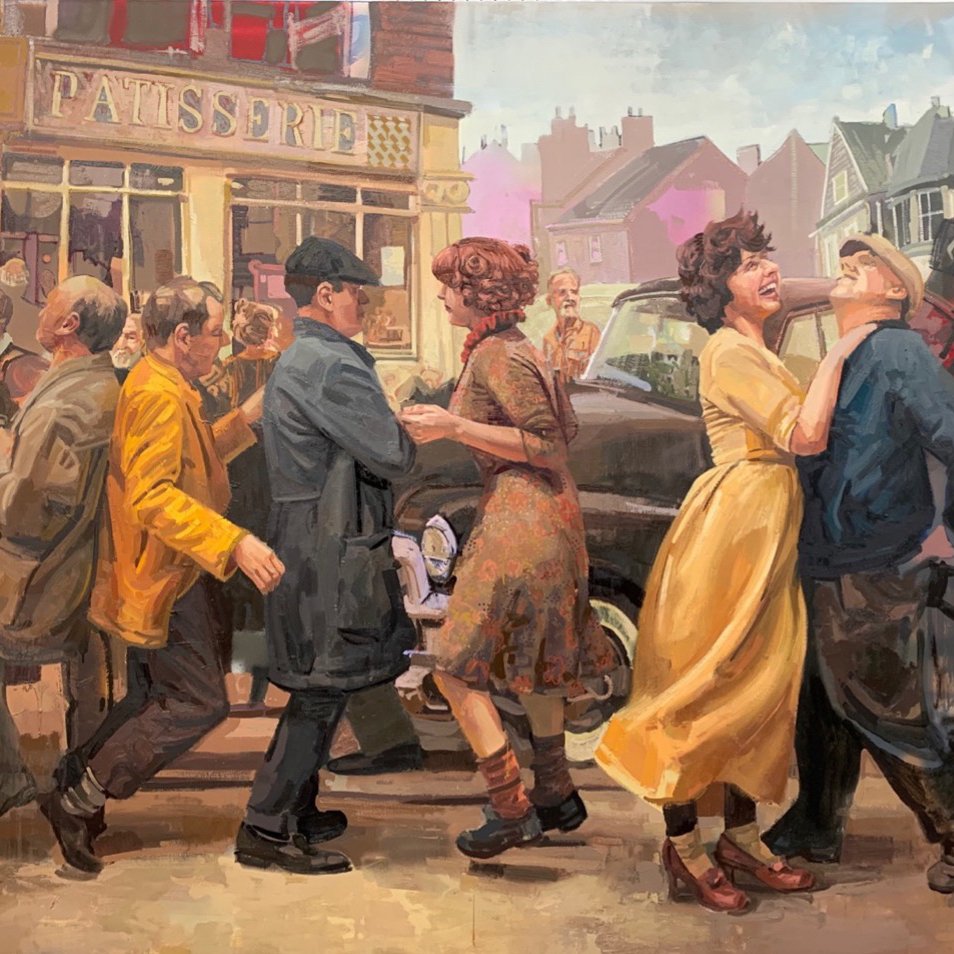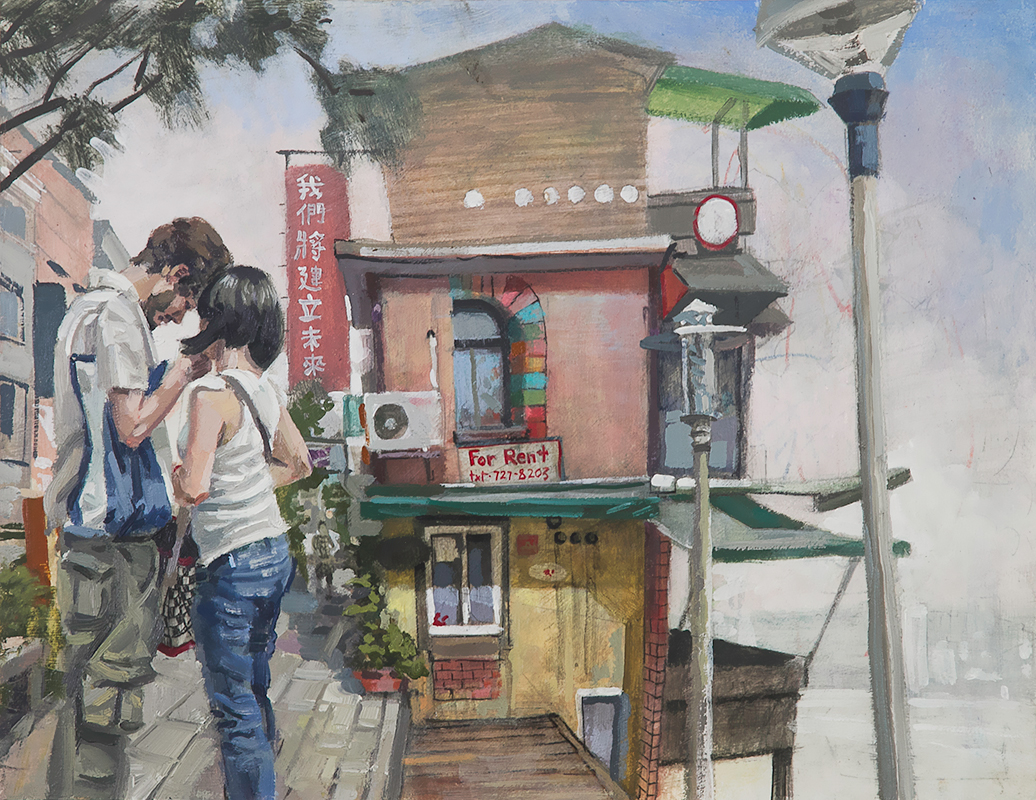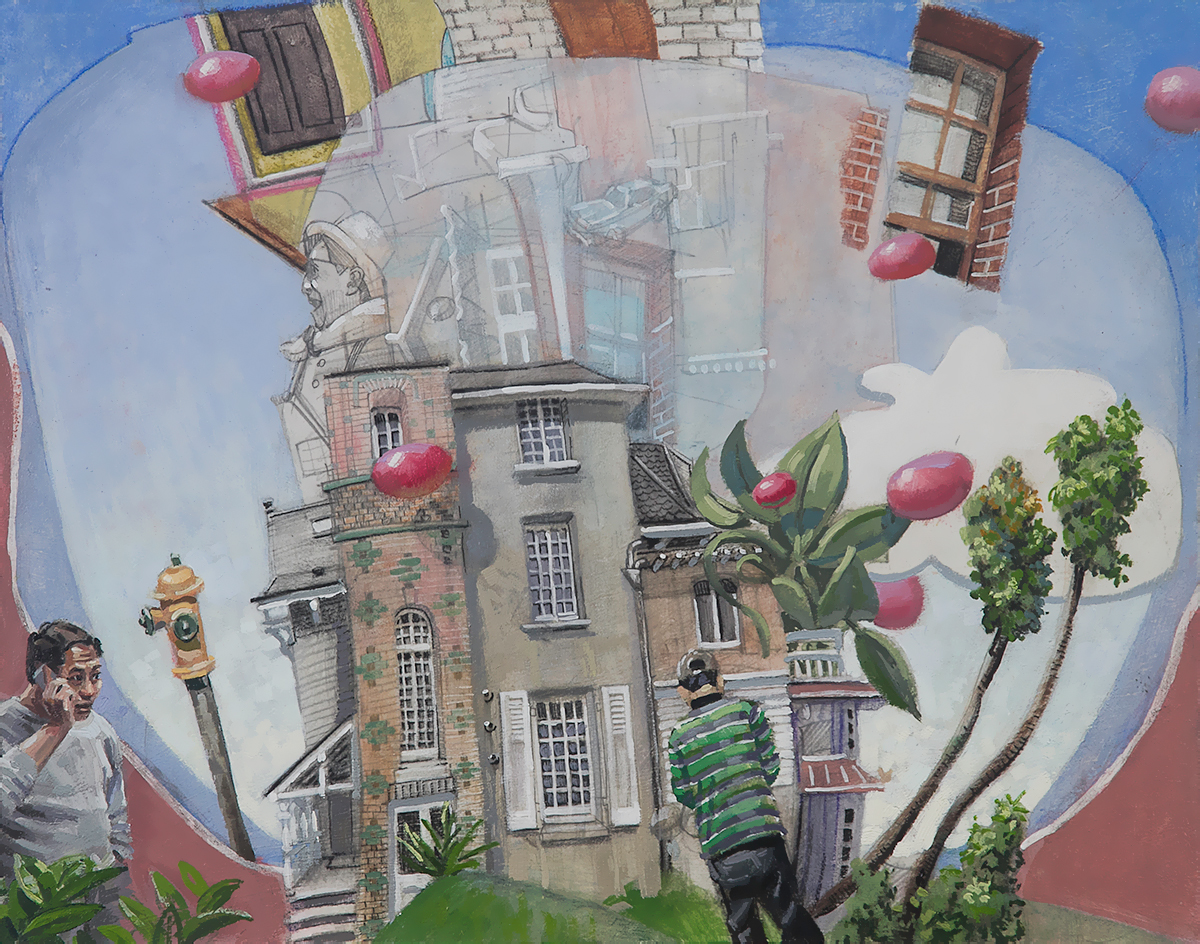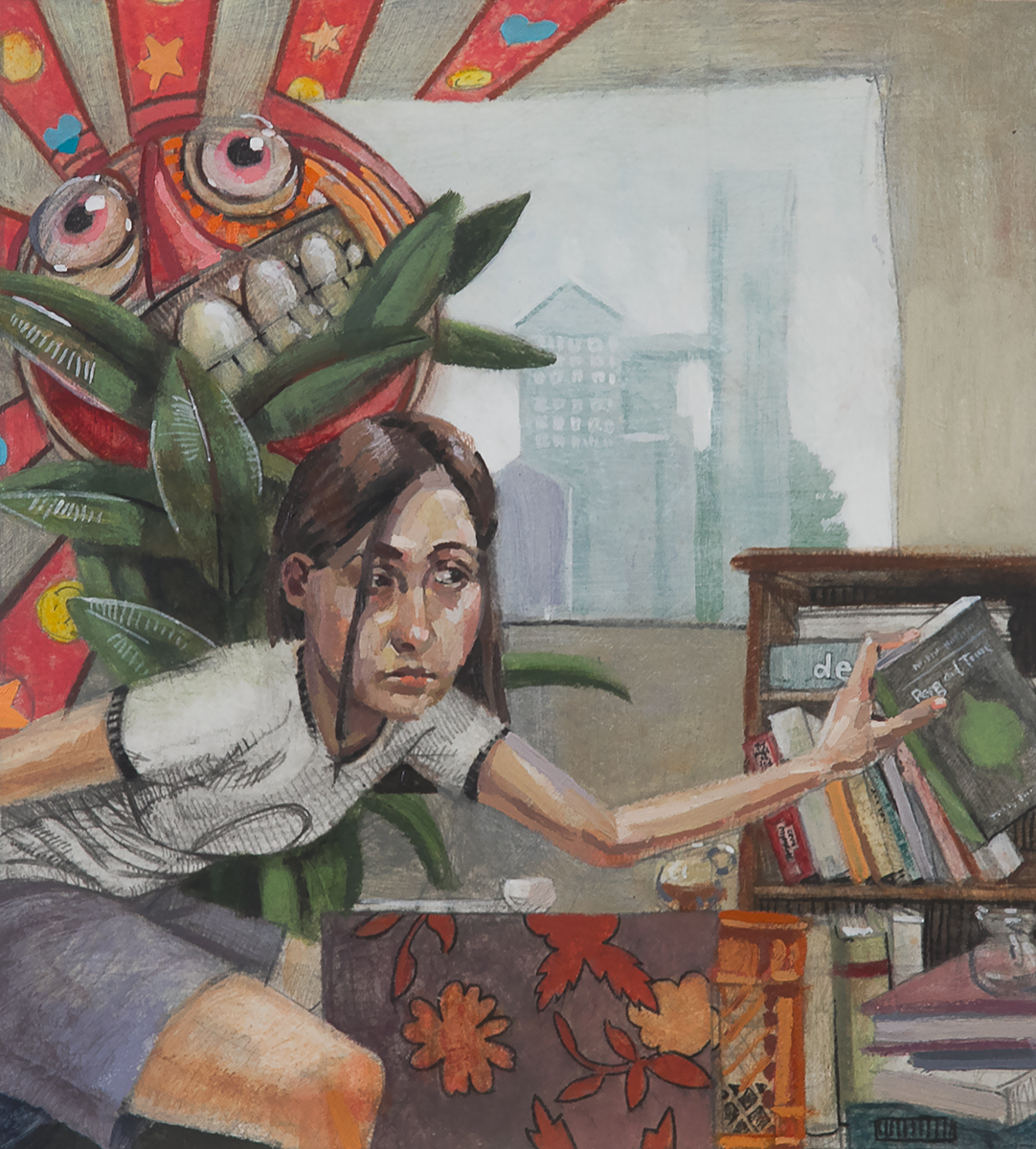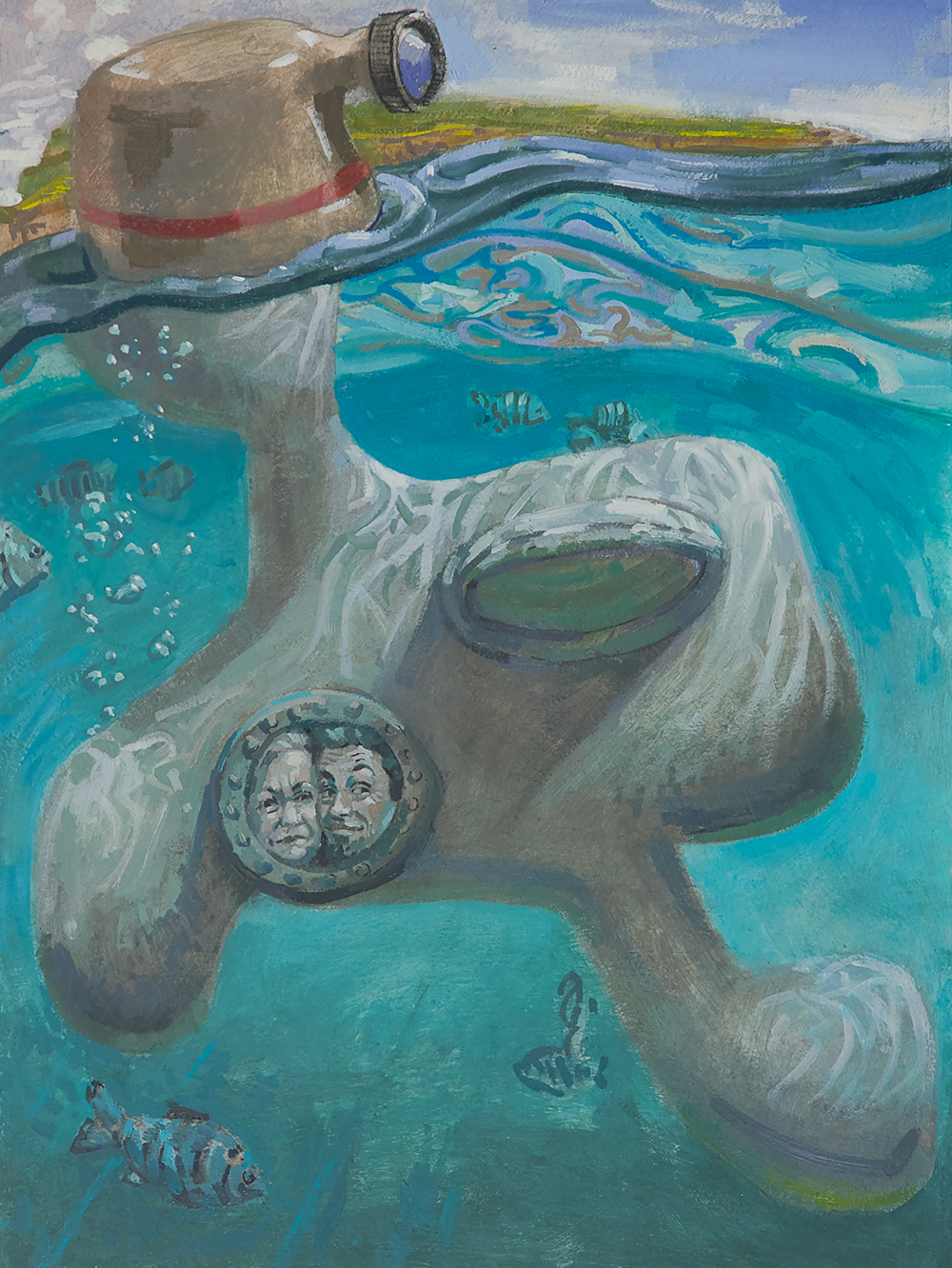Ben Duke
b. 1977, Louisville, KY
Born in 1980, Benjamin Duke is an American artist from Louisville. After studying art, literature and philosophy at the University of Utah, he graduated from the Maryland Institute College of Arts. He has been teaching painting and drawing at the Michigan State University since 2006. Duke's painting's are an explosion, like a riot which don't restrict itself to the borders of the canvas. His work has been presented in several personal exhibitions on a national and international level, like Gallery Victor Armendariz in Chicago. Benjamin Duke was also chosen for international residencies in Bamboo Curtain Studios and Kuandu Museum of Fine Art; a catalog which presented his works from 2001 until 2010 published in 2010.
Ben Duke
Dancing Plague
oil on canvas
67 x 87 inches
Price: 18,000.
Choreomania refers to a phenomenon that occurred during the medieval and early modern periods, characterized by spontaneous and uncontrollable dancing in large groups of people. It was also known as "dancing mania" or "St. Vitus's dance" in reference to the patron saint of dancers and performers. One of the most famous cases of choreomania is associated with a woman named Frau Troffea, who lived in the city of Strasbourg, which is now part of France. In the summer of 1518, Frau Troffea started dancing fervently in the streets without any apparent reason. Her dancing continued for several days, and soon others in the city joined her. As the days went by, the number of dancers increased significantly. People from different walks of life became afflicted with the strange compulsion to dance uncontrollably. The dancing became so intense and widespread that it began to take a toll on the participants' health, with some dancers collapsing from exhaustion, injury, or even death due to heart attacks or strokes. Authorities at the time were perplexed by the situation and attempted to address it in various ways. They constructed stages and organized musicians to accompany the dancers, hoping that it would help them "dance out" their frenetic energy. However, these efforts seemed to have little effect, and the dancing continued unabated. Eventually, medical professionals and theologians were called upon to investigate the phenomenon. They proposed theories that the dancing was caused by supernatural forces, such as demonic possession or divine punishment. Some even suggested that it was a result of imbalanced bodily humors or a form of mass hysteria. The outbreak of choreomania in Strasbourg finally subsided after several months, but not without leaving a significant impact on the city and its people. The event was documented by contemporary chroniclers and has since become a notable case study in the history of mass psychogenic illness, shedding light on the potential influence of social and psychological factors on human behavior.

